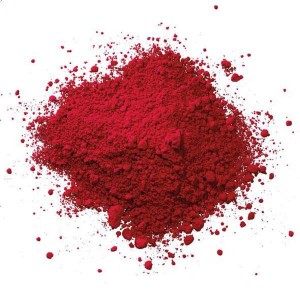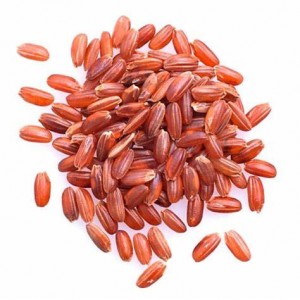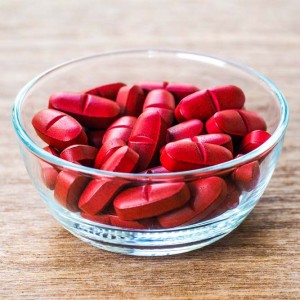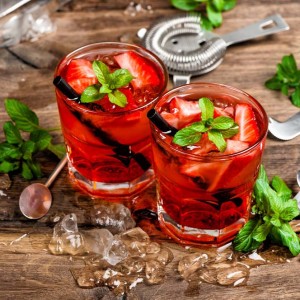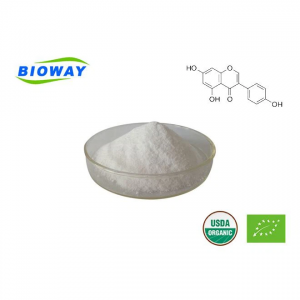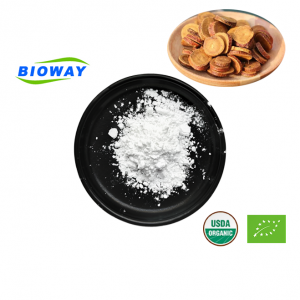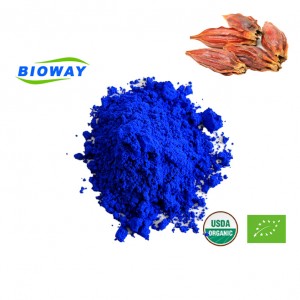Organic Red Yeast Rice Extract
Organic Red Yeast Rice Extract, also known as Monascus red, is a type of traditional Chinese medicine produced by the Monascus Purpureus with cereals and water as raw materials in 100% solid-state fermentation. It is used for various purposes, such as for improving digestion and blood circulation, reducing inflammation, and lowering cholesterol levels. Red yeast rice extract contains natural compounds called monacolins, which are known to inhibit the production of cholesterol in the liver. One of the monacolins in red yeast rice extract, called monacolin K, is chemically identical to the active ingredient in some cholesterol-lowering drugs, such as lovastatin. Due to its cholesterol-lowering properties, red yeast rice extract is often used as a natural alternative to pharmaceutical statins. However, it is important to note that red yeast rice extract may also have side effects and interact with certain medications, so it is advisable to consult a healthcare provider before using it for medicinal purposes.
Organic Monascus Red is often used as a natural red colorant in food products. The pigment produced by red yeast rice extract is known as monascin or Monascus Red, and it has been used traditionally in Asian cuisine to color both food and beverages. Monascus Red can provide shades of pink, red, and purple, depending on the application and the concentration used. It is commonly found in preserved meats, fermented tofu, red rice wine, and other foods. However, it is important to note that the use of Monascus Red in food products is regulated in certain countries, and specific limits and labeling requirements may apply.
| Product Name: | Organic Red Yeast Rice Extract | Country of Origin: | P. R. China |
| Item | Specification | Result | Test Method |
| Active Ingredients Assay | Total Monacolin-K≥4 % | 4.1% | HPLC |
| Acid from Monacolin-K | 2.1% | ||
| Lactone Form Monacolin-K | 2.0% | ||
| Identification | Positive | Complies | TLC |
| Appearance | Red Fine Powder | Complies | Visual |
| Odor | Characteristic | Complies | Organoleptic |
| Taste | Characteristic | Complies | Organoleptic |
| Sieve Analysis | 100% pass 80 mesh | Complies | 80 Mesh Screen |
| Loss on Drying | ≤8% | 4.56% | 5g/105ºC/5hrs |
| Chemical Control | |||
| Citrinin | Negative | Complies | Atomic Absorption |
| Heavy Metals | ≤10ppm | Complies | Atomic Absorption |
| Arsenic (As) | ≤2ppm | Complies | Atomic Absorption |
| Lead (Pb) | ≤2ppm | Complies | Atomic Absorption |
| Cadmium(Cd) | ≤1ppm | Complies | Atomic Absorption |
| Mercury (Hg) | ≤0.1ppm | Complies | Atomic Absorption |
| Microbiological Control | |||
| Total Plate Count | ≤1000cfu/g | Complies | AOAC |
| Yeast & Mold | ≤100cfu/g | Complies | AOAC |
| Salmonella | Negative | Complies | AOAC |
| E.Coli | Negative | Complies | AOAC |
① 100% USDA Certified Organic, sustainably harvested raw material, Powder;
② 100% Vegetarian;
③ We guarantee that this product has NEVER been fumigated;
④ Free from excipients and stearates;
⑤ Does NOT contain dairy, wheat, gluten, peanuts, soy, or corn allergens;
⑥ NO animal testing or byproducts, artificial flavors, or colors;
⑥ Manufactured in China and tested in the Third-party Agent;
⑦ Packaged in resealable, temperature and chemical-resistant, lower air permeability, food-grade bags.
1. Food: Monascus Red can provide a natural and vibrant red color to a wide range of food products, including meat, poultry, dairy, baked goods, confectionery, beverages, and more.
2. Pharmaceuticals: Monascus Red can be used in pharmaceutical preparations as an alternative to synthetic dyes, which are known to have potential health risks.
3. Cosmetics: Monascus Red can be added to cosmetics such as lipsticks, nail polish, and other personal care products to provide a natural coloring effect.
4. Textiles: Monascus Red can be used in textile dyeing as a natural alternative to synthetic dyes.
5. Inks: Monascus Red can be used in ink formulations to provide a natural red color for printing applications.
It is important to note that the use of Monascus Red in different applications may be subject to regulatory requirements, and specific concentration limits and labeling requirements may apply in different countries.
Manufacturing process of Organic Red Yeast Rice Extract
1. Strain selection: A suitable strain of Monascus fungus is selected and cultivated under controlled conditions with the use of a suitable growth medium.
2. Fermentation: The selected strain is grown in a suitable medium under favorable conditions of temperature, pH, and aeration for a specified period of time. During this time, the fungus produces the natural pigment called Monascus Red.
3. Extraction: After the fermentation process is complete, the Monascus Red pigment is extracted using a suitable solvent. Ethanol or water are commonly used solvents for this process.
4. Filtration: The extract is then filtered to remove impurities and to obtain a pure extract of Monascus Red.
5. Concentration: The extract may be concentrated to increase the pigment concentration and reduce the volume of the final product.
6. Standardization: The final product is standardized with respect to its quality, composition, and color intensity.
7. Packaging: The Monascus Red pigment is then packaged in suitable containers and stored in a cool and dry place until it is used.
The above steps may vary depending on the manufacturer's specific processes and equipment used. The use of natural colorings such as Monascus Red can provide a safe and sustainable alternative to synthetic dyes, which can have potential health risks.
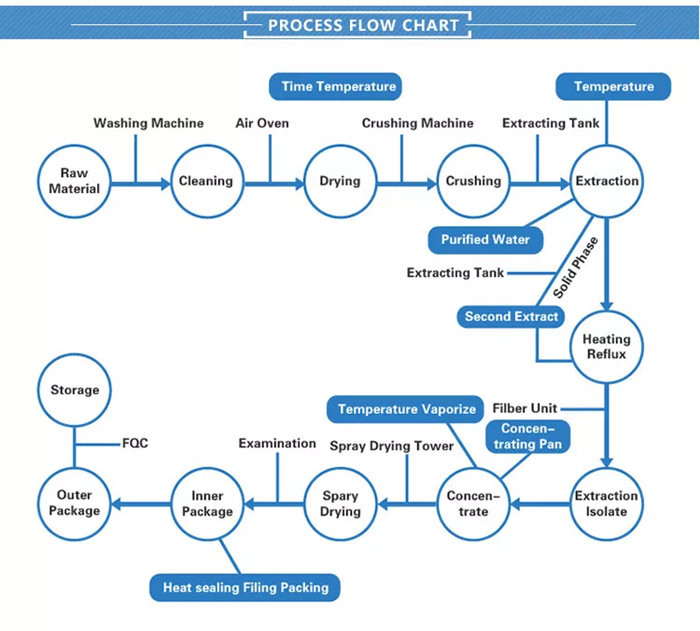
Storage: Keep in a cool, dry, and clean place, Protect from moisture and direct light.
Bulk Package: 25kg/drum.
Lead Time: 7 days after your order.
Shelf Life: 2 years.
Remark: Customized specifications also can be achieved.
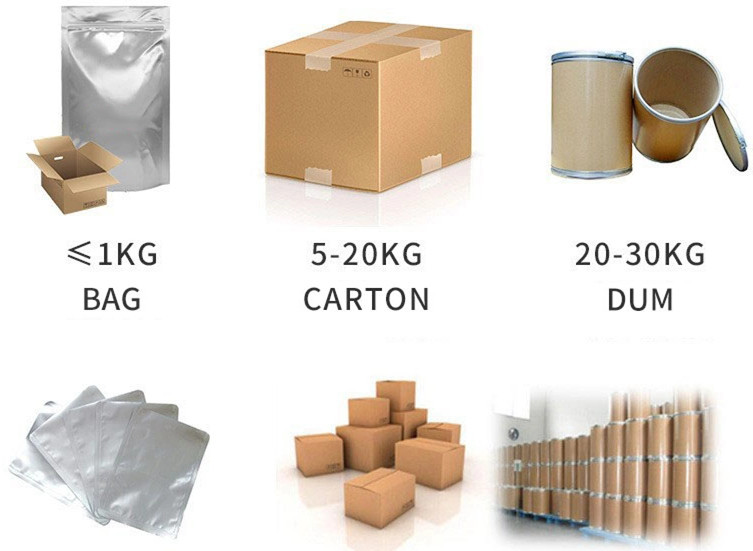
Express
Under 100kg, 3-5Days
Door to door service easy to pick up the goods
By Sea
Over300kg, Around 30 Days
Port to port service professional clearance broker needed
By Air
100kg-1000kg, 5-7Days
Airport to airport service professional clearance broker needed

We have obtained the USDA and EU organic certificate issued by NASAA organic certification body, the BRC certificate issued by SGS, have a complete quality certification system, and obtain an ISO9001 certificate issued by CQC. Our company has a HACCP Plan, a Food Safety Protection Plan, and a Food Fraud Prevention Management Plan. At present, less than 40% of the factories in China control these three aspects, and less than 60% of the traders.

The taboos of red yeast rice are mainly taboos for the crowd, including those with hyperactive gastrointestinal motility, those who are prone to bleeding, those who take lipid-lowering drugs, and those with allergies. Red yeast rice is brownish-red or purple-red rice grains fermented with japonica rice, which has the effect of invigorating the spleen and stomach and promoting blood circulation.
1. People with hyperactive gastrointestinal motility: Red yeast rice has the effect of invigorating the spleen and eliminating food. It is suitable for people who are full of food. Therefore, people with hyperactive gastrointestinal motility need to fast. People with hyperactive gastrointestinal motility often have symptoms of diarrhea. If red yeast rice is consumed, it may cause overdigestion and aggravate the symptoms of diarrhea;
2. People who are prone to bleeding: red yeast rice has a certain effect of promoting blood circulation and removing blood stasis. It is suitable for people with stagnant abdominal pain and postpartum lochia. Affect blood coagulation function, which may cause symptoms of slow blood coagulation, so fasting is required;
3. Those who take lipid-lowering drugs: those who take lipid-lowering drugs should not take red yeast rice at the same time, because lipid-lowering drugs can lower cholesterol and regulate blood lipids, and red yeast rice has certain irritants, and eating together may affect lipid-lowering the effect of the medicine;
4. Allergies: If you are allergic to red yeast rice, you should not eat red yeast rice to prevent gastrointestinal allergic reactions such as diarrhea, vomiting, abdominal pain, and abdominal distension, and even anaphylactic shock symptoms such as dyspnea and laryngeal edema. life safety.
In addition, red yeast rice is susceptible to moisture. Once it is affected by water, it may be infected by harmful microorganisms, making it gradually moldy, agglomerated, and moth-eaten. Eating such red yeast rice is harmful to health and should not be eaten. It is recommended to store it in a dry environment to avoid moisture and deterioration.







